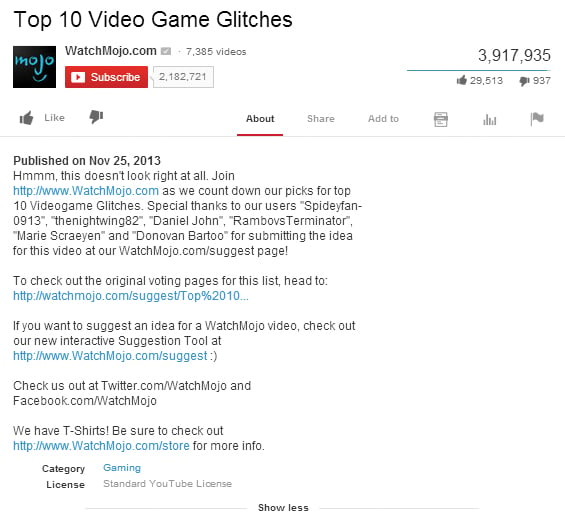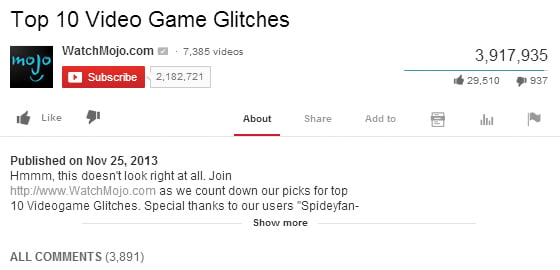Rich Content & the Principles of Video Optimization

Today's search engine experience is full of what is referred to within inner SEO circles as rich content. Why "rich content" you ask? Well it can enrich your traffic and unique visitor count, of course!
Google search result pages include websites (pages), data from the knowledge graph, images and of course, videos (with a preponderance of that content from its YouTube property). Internet professionals are responsible for providing an array of content formats for user consumption, which, if you are like many others, doesn't include as much video as it likely should.
Lucky for everyone; the principles that drive Web page optimization are the same for video (for the most part). That's good news because website visitors are more likely to purchase products online after watching videos, not to mention that the format is exceptional in terms of its ability to drive awareness and loyalty for brands. But isn't optimization of this content format as challenging as Web page optimization? Not when you know what can be optimized.
Video SEO is about maintaining an additional layer of information around the content asset(s) and the channel(s) supporting it. When optimized intelligently, videos provide effective ways to show up in more search result queries and attract new customers to your website as a result. And you never know, you could generate a few conversions too.
In order to optimize strategically, it is important to start by understanding the influencing factors and how major indices might rank videos. Those factors, although locked away securely in a black box, likely include on-page elements (title, description, tags), retention (total time watched, average view duration), engagement (likes, comments, ratings, shares), authority of the channel itself, as well as the total number of views.
What's unique about optimization of video is that unlike text, search engines can't actually "see" the video content as humans do, which means the elements that can be optimized are surprisingly straightforward, diverse and useful to users.
Titles: Perhaps the most important element in video optimization, the title does double duty in that the words and phrases used influence user interaction (a click from the search result) and the ultimate viewing of the video, as well as the search engine's determination of the relevancy of a video to a user's query. When creating titles, marketers should choose descriptive and relevant keywords and keep branding and episode information toward the end. Ideally, titles will be concise and reinforced by the thumbnail chosen.
Description: The number of elements that can be optimized for a video is limited, so make the most of those that enable you to provide information to the prospective viewer - like the description. Each of the networks where a video is distributed will have different description lengths they support, so do yourself and your brand a favor and keep the most important information at the top. Keep in mind that it's important to make descriptions as compelling as possible so don't be shy - add in "experience-enhancing" links such as subscription links or suggestions for related videos, even playlists in the first few lines of the description field. Look at the example in the first two images. WatchMojo links directly to its website in the description field, bypassing the requirement of users to expand to view additional information about the video/channel/producer.
article continues below...


Tags: Titles and descriptions are important to indicating what a video is about, but tags provide a way to add a greater diversity of information; keywords and phrases that may not fit so neatly into other optimization elements. When applying tags to a particular video, make sure they come in two types - video-specific and channel-specific those which define the contents of the video and those which explain more about the channel where the video is included. Avoid keyword stuffing in the available tag areas (as it dilutes the relevancy value), but do include some keywords found in your title. In the case of YouTube specifically, make sure to use quotation marks (e.g. "video game glitches") to indicate multi-word tags.
Thumbnails: The Web is a visual place and the better quality the image assets, the more attention can potentially be gained for the video assets being optimized. When thumbnails are appealing, as well as both memorable and informative, video views will increase dramatically (which in turn can increase social shares). When developing thumbnails, make sure to use bright, high-contrast images that look reasonable at multiple resolutions (a 640 pixel x 360 pixel minimum with a 16:9 aspect ratio is ideal), and always make a concerted effort to take individual shots for the intention of using them as thumbnails (close-ups of faces work particularly well).
Annotations: Specific to YouTube (as far we know), annotations provide a powerful way to optimize videos for the user experience. While the verdict is out on whether annotations by themselves influence placement on the search results of popular engines like Google or Bing, they do provide another highly useful layer of information that could be used to determine relevancy in the future, particularly for long-tail, multi-word queries. YouTube's annotation features provide publishers with control over the text, the placement, the timing and the link URLs, so take advantage of the opportunity and get creative. For example, why not place secret "Easter eggs" in videos? Musician Rob Scallon used annotations within a video that directed viewers to other videos he created, creating a scavenger hunt of sorts for his 41,000 followers on YouTube (the third image above).
What's Your Video Intent? Videos are quickly proving to be an essential component in the content marketing mix and we've only touched on some of the essential elements of optimization. Join Website Magazine online for part two where the discussion turns to more complex matters of video optimization including the use of Schema Markup for video, video sitemaps, channel optimization and more at wsm.co/videoseo2.










